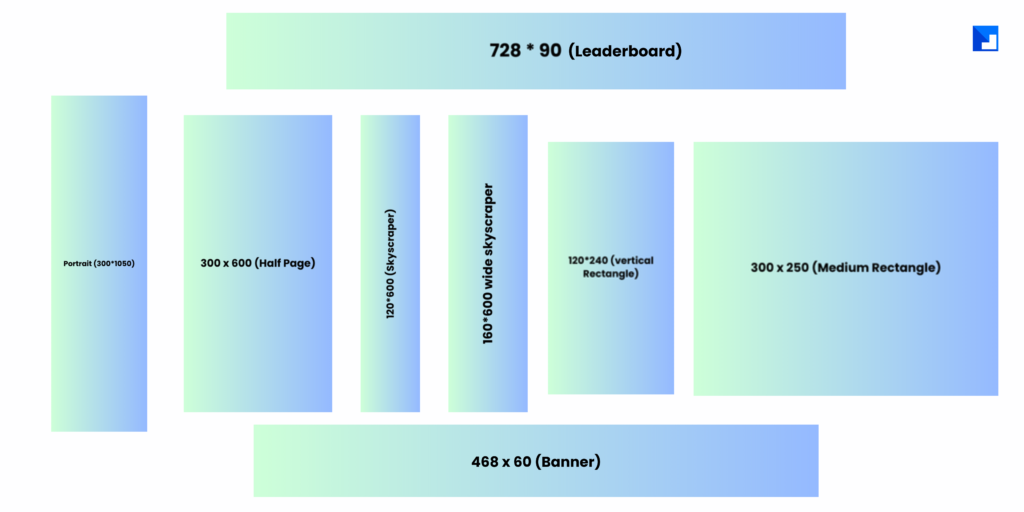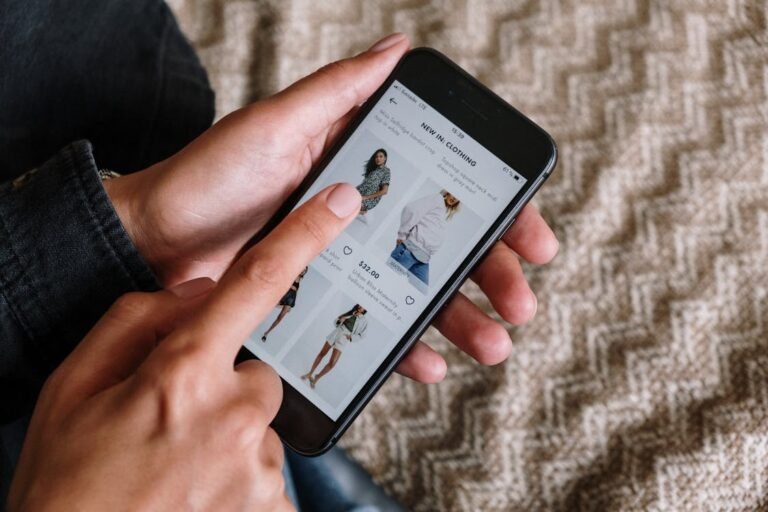
A banner ad is essential for drawing attention, increasing traffic, and increasing conversions in digital marketing. The placement and size of banner ads can greatly impact performance and user engagement. To assist advertisers in making well-informed decisions, this blog explores the different banner ad positions and sizes for desktop and mobile platforms.
You can also read: Product Image Size: A Comprehensive Guide for Perfect Visuals
Why Banner Placement Matters?
The placement of banner ads determines their visibility and effectiveness. Strategic placement can:
- Increase click-through rates (CTR).
- Enhance user experience without disrupting navigation.
- Maximize ad revenue by aligning with user behavior.
Optimal Banner Ad Placements for Desktop
- Above the Fold
- Description: The area is visible without scrolling.
- Common Sizes: 728 x 90 (Leaderboard), 970 x 90 (Large Leaderboard).
- Benefits: High visibility and strong impressions.
- Sidebar (Right Rail)
- Description: Positioned on the right side of the content.
- Common Sizes: 300 x 250 (Medium Rectangle), 300 x 600 (Half Page).
- Benefits: Non-intrusive placement with consistent visibility.
- Inline with Content
- Description: Embedded within articles or blog posts.
- Common Sizes: 468 x 60 (Banner), 728 x 90 (Leaderboard).
- Benefits: Seamlessly integrates with content, improving engagement.
- Footer
- Description: At the bottom of the page.
- Common Sizes: 728 x 90 (Leaderboard), 970 x 90 (Large Leaderboard).
- Benefits: Captures attention as users finish reading.
- Interstitial Ads
- Description: Full-page ads displayed between content or transitions.
- Common Sizes: Responsive dimensions.
- Benefits: It commands full attention and is ideal for impactful messages.
Optimal Banner Ad Placements for Mobile
- Header (Top of the Screen)
- Description: Fixed or scrolling ad at the top.
- Common Sizes: 320 x 50 (Mobile Leaderboard), 300 x 50 (Small Banner).
- Benefits: High visibility without interrupting user experience.
- In-Feed Ads
- Description: Integrated within social feeds or content streams.
- Common Sizes: 320 x 100 (Large Mobile Banner), responsive sizes.
- Benefits: Blends naturally with content, leading to better engagement.
- Sticky Bottom Banner
- Description: Fixed at the bottom of the screen while scrolling.
- Common Sizes: 320 x 50 (Mobile Leaderboard).
- Benefits: Continuous visibility without being overly intrusive.
- Interstitial Mobile Ads
- Description: Full-screen ads appear between actions.
- Common Sizes: Responsive dimensions.
- Benefits: Commands user attention for a brief period.
- Mid-Content Placements
- Description: Ads placed within articles or scrolling content.
- Common Sizes: 300 x 250 (Medium Rectangle), 320 x 100 (Large Mobile Banner).
- Benefits: Engages users as they consume content.
Best Practices for Banner Ad Placement and Size
- Consider User Experience
- Avoid intrusive placements that disrupt navigation.
- Balance ad visibility with content accessibility.
- Responsive Design
- Ensure ads resize seamlessly for different devices.
- Use tools like Google’s responsive ad units.
- A/B Testing
- Experiment with placements and sizes to determine what works best.
- Track performance metrics like CTR, impressions, and conversions.
- Ad Relevance
- Match ad content with the surrounding context.
- Relevant ads lead to higher engagement and reduced bounce rates.
- Follow Platform Guidelines
- Adhere to specifications set by platforms like Google Ads and Facebook.
- Avoid penalties for non-compliance.
Common Mistakes to Avoid
- Overloading Pages with Ads
- Too many ads can lead to a cluttered experience and increased bounce rates.
- Too many ads can lead to a cluttered experience and increased bounce rates.
- Ignoring Mobile Optimization
- Mobile users make up a significant portion of traffic; ensure ads cater to their needs.
- Mobile users make up a significant portion of traffic; ensure ads cater to their needs.
- Using Irrelevant Sizes
- Non-standard sizes may not display correctly, reducing effectiveness.
- Non-standard sizes may not display correctly, reducing effectiveness.
- Placing Ads in Blind Spots
- Poorly placed ads get ignored and fail to deliver results.
Key Insights
- The success of banner ads lies in strategic placement and the right sizing for desktop and mobile platforms.
- Above-the-fold placements, in-feed ads, and sticky banners are popular choices for high visibility and engagement.
- By adhering to best practices and regularly optimizing strategies, businesses can maximize the impact of their banner ad campaigns while enhancing user experience.





